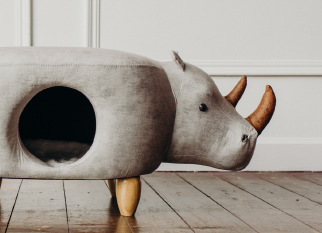Effects of humid environment on extension cord
In modern living and business environments, extension cords are a key tool for power transmission and are widely used in various places. However, moisture poses a significant threat to the performance and safety of extension cords, so a deep understanding of the effects of moisture on extension cords is critical.
Effects of Humid Environment on the Physical Structure of Extension Cords
Aging of insulation
Moisture in humid environments can significantly accelerate the aging process of extension cord insulation. The insulation layer is the core component that protects conductors from external interference. Its aging directly leads to the degradation of insulation performance, thereby increasing the risk of electric shock and short circuit. In this case, the safety of using the extension cord is seriously challenged.
metal corrosion
The metal parts inside extension cords, such as plugs, sockets and wires, are prone to electrochemical corrosion in humid environments. This kind of corrosion will cause rust on the metal surface, increase resistance, reduce conductivity, and even cause problems such as poor contact or open circuit, seriously affecting the stable transmission of power.
mold growth
Moist conditions create ideal conditions for mold to grow. Not only can mold grow on the surface of an extension cord, it can also penetrate inside and damage the insulation. The acidic substances produced during the metabolism of mold will chemically react with insulating materials, further weakening the insulation performance and increasing the risk of electrical accidents.
Effects of Humid Environment on Electrical Performance of Extension Cords
Insulation resistance decreases
Moisture in the air adheres to the surface of the insulation material, reducing the insulation resistance of the extension cord. Especially for extension cords with a long service life, due to the internal dust adsorption of moisture, the moisture level will be more serious, resulting in a significant reduction in insulation resistance, increased leakage current, and may even cause insulation breakdown and cause electrical accidents.
Reduced electrical clearances and creepage distances
Moisture conditions can cause electrical clearance and creepage distances inside extension cords to decrease. Clearance is the shortest distance between two conductive parts, while creepage is the shortest distance measured along an insulating surface. The reduction of these two parameters increases the risk of arc discharge and flashover, which may lead to equipment damage or safety hazards.
Increased contact resistance
In humid environments, the contact resistance between the extension cord plug and outlet increases. The increase in contact resistance will cause the temperature of the conductor and its accessories to rise, and may even cause contact welding, causing electrical failure and affecting the normal operation of the equipment.
Security recommendations and countermeasures
Choose a waterproof and moisture-proof extension cord
When using extension cords in humid environments, you should give priority to models that are waterproof and moisture-proof. These extension cords often use special materials and designs to ensure good insulation and electrical connections in wet environments.
Regular inspection and maintenance
Regularly conduct comprehensive inspections and maintenance on extension cords, including the integrity of the insulation layer, corrosion of metal parts, and contact conditions of plugs and sockets. Once any abnormalities are found, the extension cord should be replaced immediately to ensure safe use.
Avoid prolonged soaking
Try to avoid extension cords being soaked in water for extended periods of time or exposed to extreme moisture. If an extension cord must be used in this environment, additional protective measures, such as using waterproof bags or electrical tape, should be taken to reduce potential risks.
Reasonable layout and use
When using extension cords in humid environments, layout them properly to avoid entanglement, squeezing, or pulling of the cords to reduce physical damage to the extension cord and ensure its normal operation.


 English
English русский
русский 中文简体
中文简体 Español
Español













